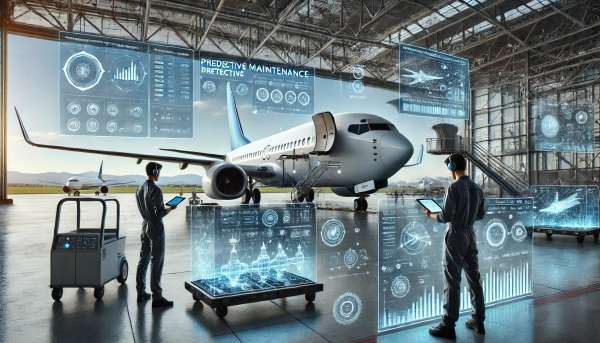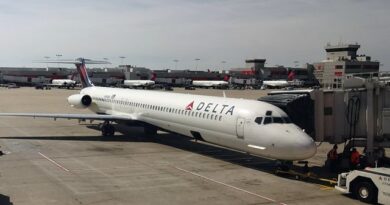Predictive Maintenance in Commercial Aircraft: A Game-Changer for Aviation
Predictive maintenance is transforming the aviation industry. Airlines are increasingly adopting this proactive approach to improve aircraft reliability, reduce operational costs, and enhance safety. By leveraging advanced technologies such as data analytics, artificial intelligence (AI), and the Internet of Things (IoT), airlines can predict when parts will fail and take action before a breakdown occurs. Predictive Maintenance in Commercial Aircraft.
What is Predictive Maintenance?
Predictive maintenance involves monitoring the condition of aircraft components in real-time. Sensors installed on key systems gather data about temperature, vibration, pressure, and other performance metrics. This data is then analyzed using machine learning algorithms to identify patterns that signal potential failures. Airlines can schedule maintenance only when necessary, avoiding unnecessary repairs and minimizing downtime.
Key Benefits of Predictive Maintenance in Aircraft
- Increased Safety: By detecting issues early, predictive maintenance ensures that aircraft are in optimal condition before each flight. This proactive approach reduces the likelihood of equipment malfunctions that could compromise safety.
- Reduced Costs: Traditional maintenance relies on scheduled checks, which may result in unnecessary repairs or missed issues. Predictive maintenance minimizes these inefficiencies, allowing airlines to save on labor, parts, and downtime costs.
- Minimized Delays and Cancellations: Aircraft grounded for unscheduled repairs lead to delays and cancellations, affecting passengers and airline revenue. Predictive maintenance reduces these interruptions by addressing issues before they become critical.
- Longer Lifespan of Parts: By only replacing parts when truly necessary, predictive maintenance can extend the lifespan of aircraft components, reducing waste and further lowering costs.
- Optimized Maintenance Scheduling: Data-driven insights allow maintenance teams to plan and allocate resources more effectively. Maintenance windows can be timed for maximum efficiency, ensuring that planes spend more time in the air than in the hangar.

How Does Predictive Maintenance Work in Aviation?
Predictive maintenance relies on a combination of real-time monitoring, data analytics, and advanced algorithms. Here’s how it works in commercial aircraft:
- Data Collection: Sensors placed on critical aircraft components gather vast amounts of data during flight. This data includes parameters such as engine performance, hydraulic systems, and landing gear condition.
- Data Transmission: The data collected is transmitted wirelessly to ground stations, where it is stored for analysis.
- Data Analysis: Machine learning algorithms analyze the data to identify patterns and trends that indicate potential failures. These patterns could be subtle, such as a slight increase in vibration or a change in temperature that signals an issue with a component.
- Maintenance Alerts: When the system detects an abnormal pattern, it triggers an alert. Maintenance teams can then investigate the issue and address it before it leads to a failure.
Technologies Enabling Predictive Maintenance in Aviation
Several advanced technologies are driving the adoption of predictive maintenance in commercial aviation:
- Artificial Intelligence (AI) and Machine Learning (ML): AI and ML analyze historical and real-time data to predict when a component is likely to fail. These systems become more accurate over time as they learn from more data points.
- Internet of Things (IoT): IoT sensors are critical to collecting data from aircraft systems. These sensors can monitor the health of engines, landing gear, fuel systems, and other critical components.
- Big Data and Cloud Computing: Predictive maintenance generates vast amounts of data, which is stored and processed in the cloud. This enables real-time analysis and collaboration across different teams and locations.
Real-World Examples of Predictive Maintenance in Aviation
Many airlines are already reaping the benefits of predictive maintenance. For example:
- Delta Air Lines: Delta has implemented predictive maintenance on its fleet, reducing flight delays and cancellations. By using real-time data to monitor aircraft health, Delta can proactively address issues, leading to better on-time performance and lower maintenance costs.
- Lufthansa: Lufthansa Technik, the maintenance arm of the airline, uses AI to analyze data from its aircraft. The system identifies trends and sends alerts when maintenance is required, reducing downtime and improving overall fleet efficiency.
The Future of Predictive Maintenance in Commercial Aviation
As the aviation industry continues to recover from the impacts of the COVID-19 pandemic, cost savings and operational efficiency are more important than ever. Predictive maintenance offers a path toward both, with the added benefit of increased safety and reliability.
In the coming years, expect to see more airlines adopt predictive maintenance technologies. Advances in AI, IoT, and data analytics will continue to improve the accuracy of predictions, enabling even more precise maintenance scheduling. This will lead to fewer disruptions, lower costs, and safer skies.
Conclusion
Predictive maintenance is revolutionizing how airlines manage aircraft maintenance. By using data-driven insights, airlines can predict when parts will fail and take action before problems occur. This proactive approach enhances safety, reduces costs, and minimizes disruptions. As technology advances, predictive maintenance will become even more integral to the future of commercial aviation.


